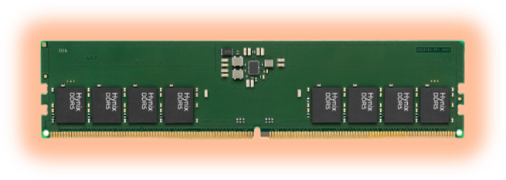How Memory Technologies Have Impacted the Industrial Robotics Industry and Automation
Industrial robotics has transformed factories. From cutting costs and increasing efficiency to improving safety and even boosting sustainability, industrial robots are one of the biggest leaps in the history of manufacturing. While the first “industrial robots” appeared over a century ago, the real advancements came with the start of the computer era. Today, state-of-the-art industrial robotics is driven by data, cloud computing, and the Internet of Things (IoT). In the landscape of industrial robotics, where precision, efficiency, and speed are paramount, the evolution of memory technologies has played a central role in advancing automation.
Step by step
DRAM components are used in a combination of smart sensors and industrial equipment at the core vision of Industry 4.0. From DDR2 to DDR5, each innovation has enhanced the performance of robotic systems and also transformed the way industries operate. DDR2, the second generation of Double Data Rate Synchronous Dynamic Random-Access Memory (DDR SDRAM), marked a significant milestone in memory technology. Its data transfer rates and bandwidth provided industrial robots at the time with the ability to process more complex tasks more swiftly. This advancement laid the foundation for faster and more responsive robotic systems, enabling them to handle manufacturing processes with greater efficiency.
Industry 4.0 and the smart factory of the future
The introduction of DDR3 further revolutionized the industrial robotics industry by offering higher speeds and lower power consumption. With improved reliability and data integrity, DDR3 enabled robots to execute tasks with greater precision and accuracy, leading to enhanced productivity on the factory floor. Manufacturers could now rely on robotics for a wider range of applications, from assembly to quality control, with confidence in their performance. As the demand for more sophisticated robotic systems grew, so did the need for advanced memory solutions. DDR4 delivered higher density and faster data rates, which empowered industrial robots to handle larger datasets and execute complex algorithms in real time.
The recent introduction of DDR5 further elevates the capabilities of industrial robotics. With its groundbreaking data transfer rates and enhanced reliability features, DDR5 is pushing the boundaries of automation even further. DDR5 is a cornerstone of Industry 4.0 and is enabling the creation of the smart factory of the future.
Starting and storing
In addition to advancements in DDR memory, the evolution of storage technologies has also played a role in shaping the landscape of industrial robotics. Solid-State Drives (SSDs) have revolutionized data storage by offering faster read/write speeds, lower latency, and greater durability, which translated into faster boot times, quicker data access, and improved overall performance for robotic systems. eMMC Flash memory has a small form factor, low power consumption, and fast read/write speeds, making it a good choice for storing firmware, configuration files, and other essential data in robotic controllers. By leveraging eMMC FLASH, manufacturers can ensure that their robotic systems operate reliably and efficiently in demanding industrial environments. SD and microSD Cards are often used in industrial robots to expand storage capacity and archive data, images, and video. With the ability to quickly swap out cards as needed, manufacturers can easily upgrade and maintain their robotic fleets, ensuring maximum uptime and productivity.
A bright future
Data has brought the degree of safety, quality, and productivity that industrial robots bring to the factory floor to the next level. The smart factory of the future will drive innovation and enable automation at unprecedented levels. From DRAM to FLASH, each advancement in memory technologies has contributed to getting us closer to realizing the vision of fully autonomous manufacturing processes. As these technologies continue to evolve, we can expect to see even greater advancements in industrial robotics, revolutionizing the way we manufacture goods and drive economic growth in the years to come.
SMARTsemi is your supply chain partner for DRAM components, eMMC solutions, and SD/microSD Flash Memory Cards for long-life applications. With 20+ years of industry experience, we understand your challenges and have aligned our priorities with yours to simplify your memory chip supply chain for the long run. We know what you need before you need it. Get a jump start and request a sample today.







